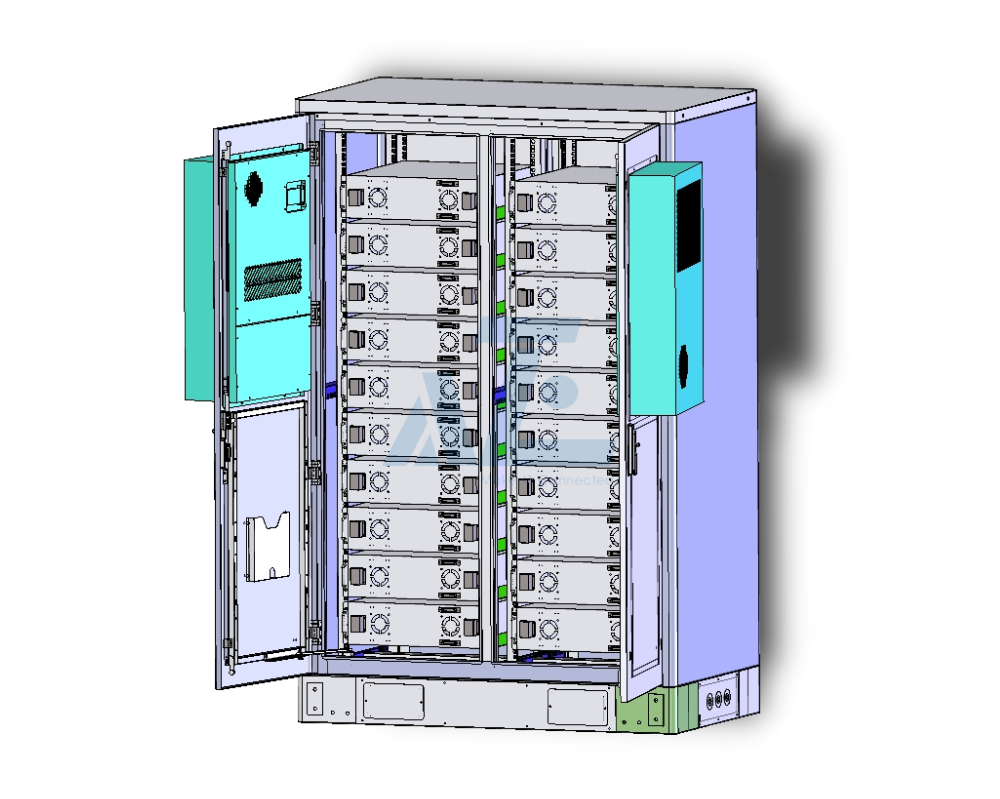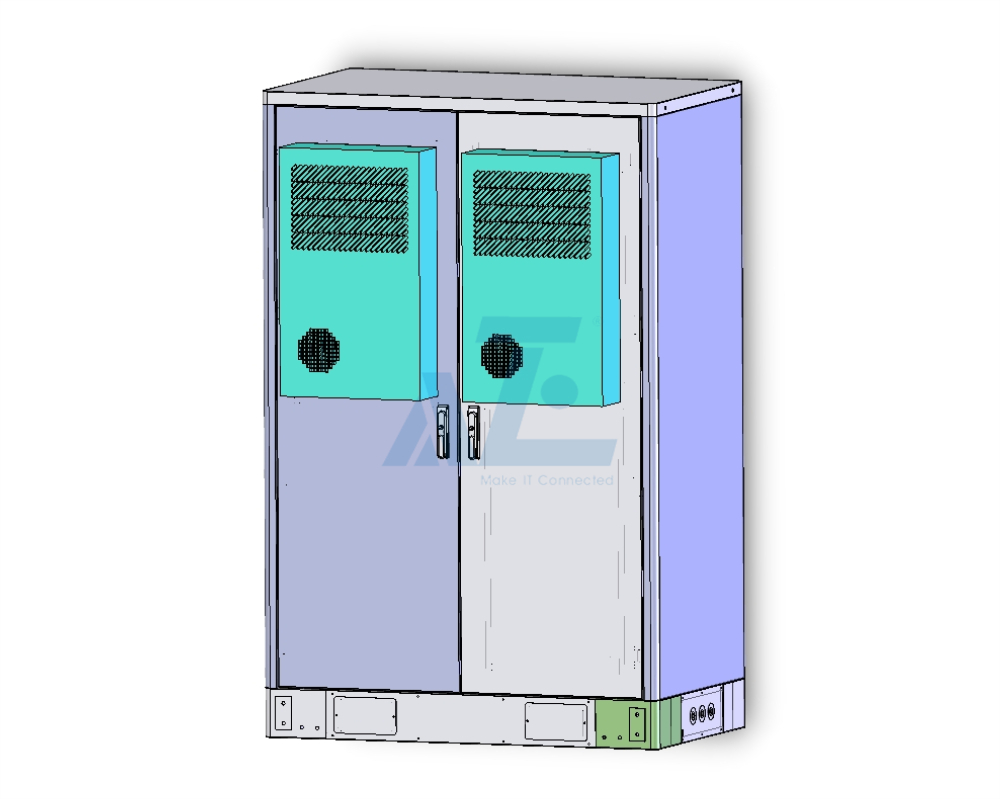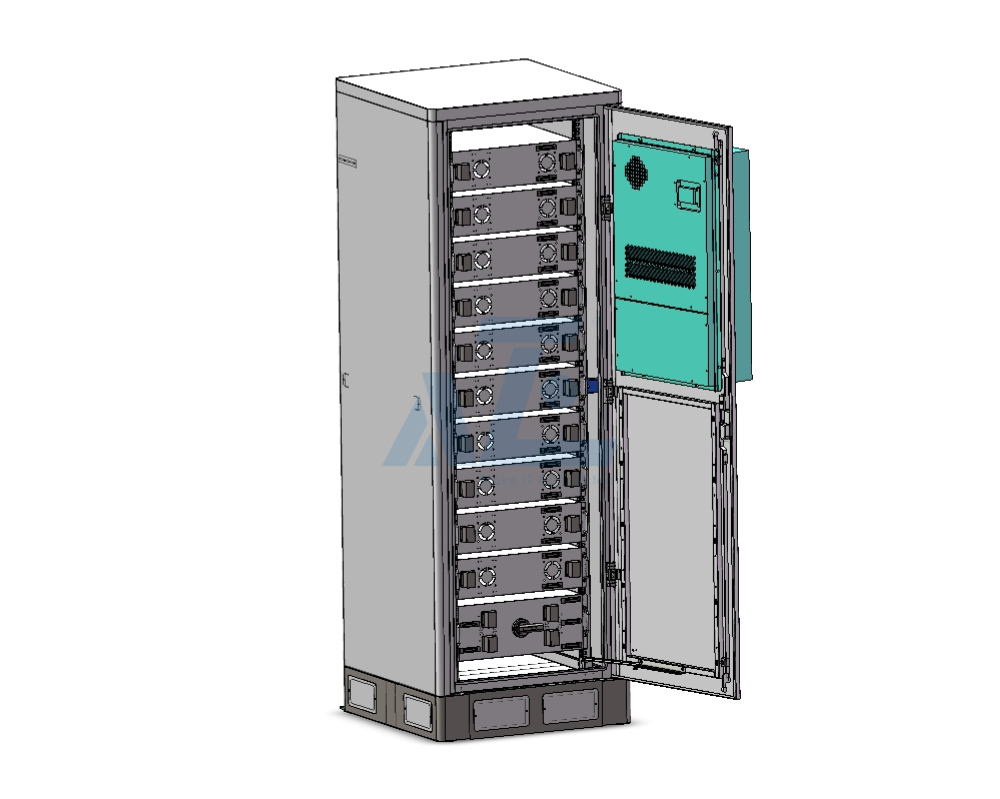AZE BESS | Renewable Energy Storage & Grid Solutions
Discover AZE's advanced All-in-One Energy Storage Cabinet and BESS Cabinets – modular, scalable, and safe energy storage solutions. Featuring lithium-ion batteries, integrated thermal management, and smart BMS technology, these cabinets are perfect for grid-tied, off-grid, and microgrid applications. Explore reliable, and IEC-compliant energy storage systems designed for renewable integration, peak shaving, and backup power. Simplify deployment with plug-and-play designs and scalable solutions for utility-scale and behind-the-meter storage. AZE Telecom, a leading manufacturer of BESS cabinets, offers innovative solutions for industries. Explore reliable, efficient, and customizable BESS cabinets today!
Custom
Warranty
Certificates
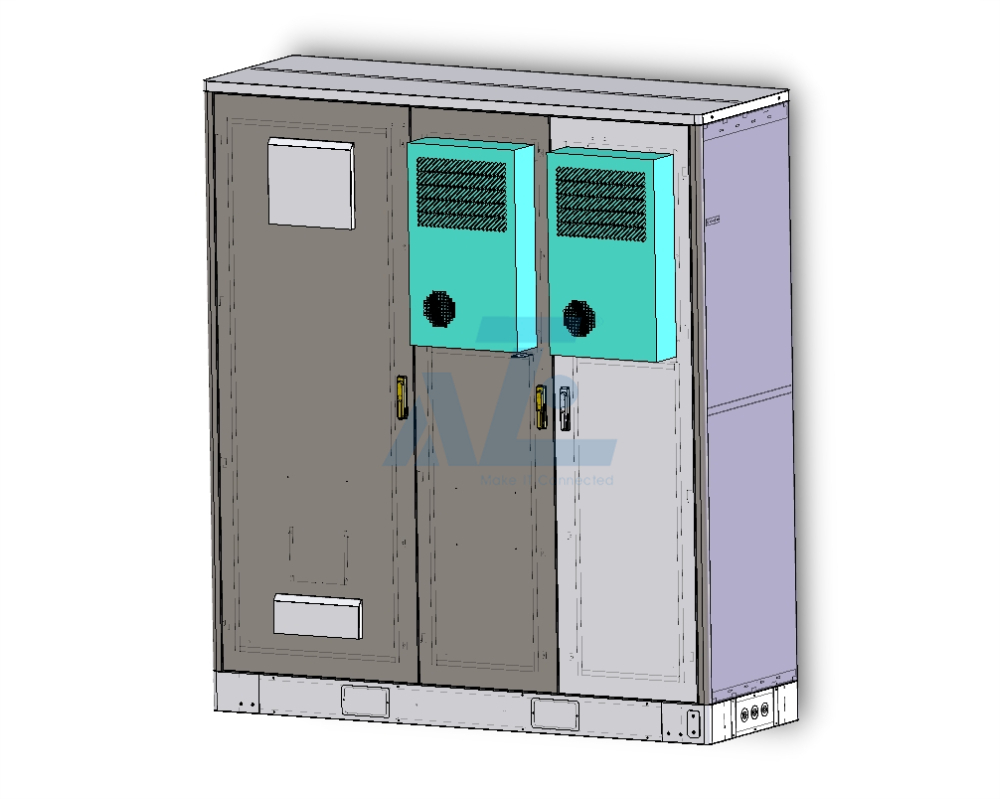
All-In-One Industrial and Commercial Energy Storage System
All-in-one ESS Solution
RODF242165BAT22-DC1K5W
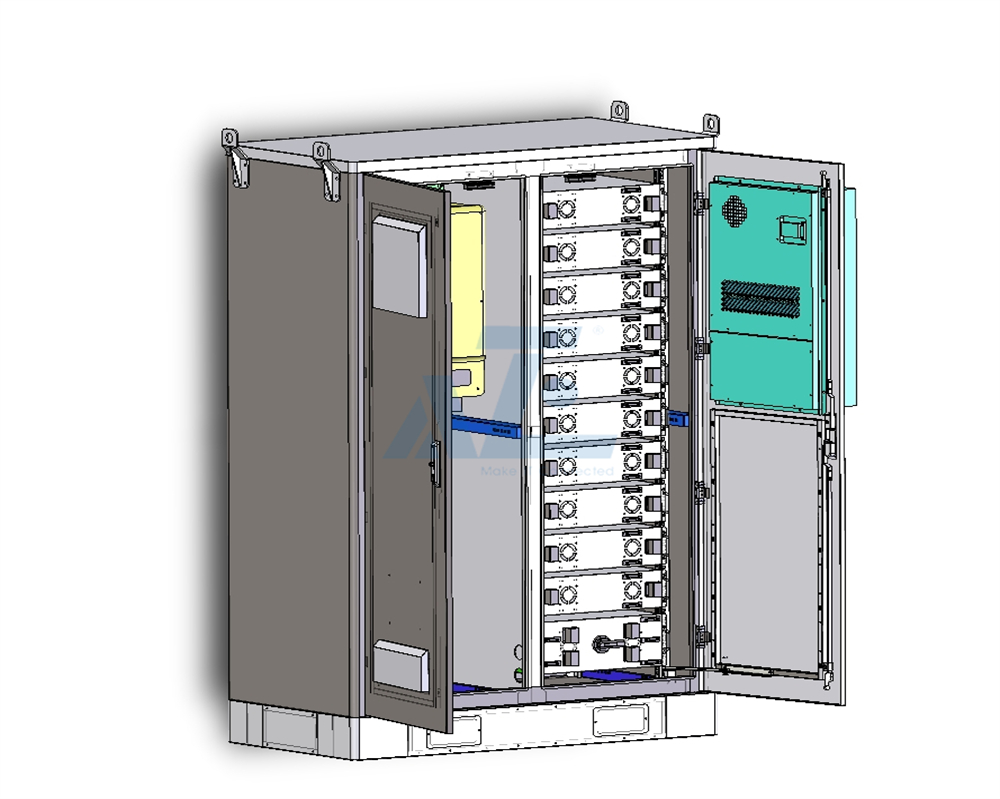
Outdoor All-in-one ESS Battery-Inverter-Electrical Storage System
All-in-one ESS Solution
RODF421275DC1K5W-B10
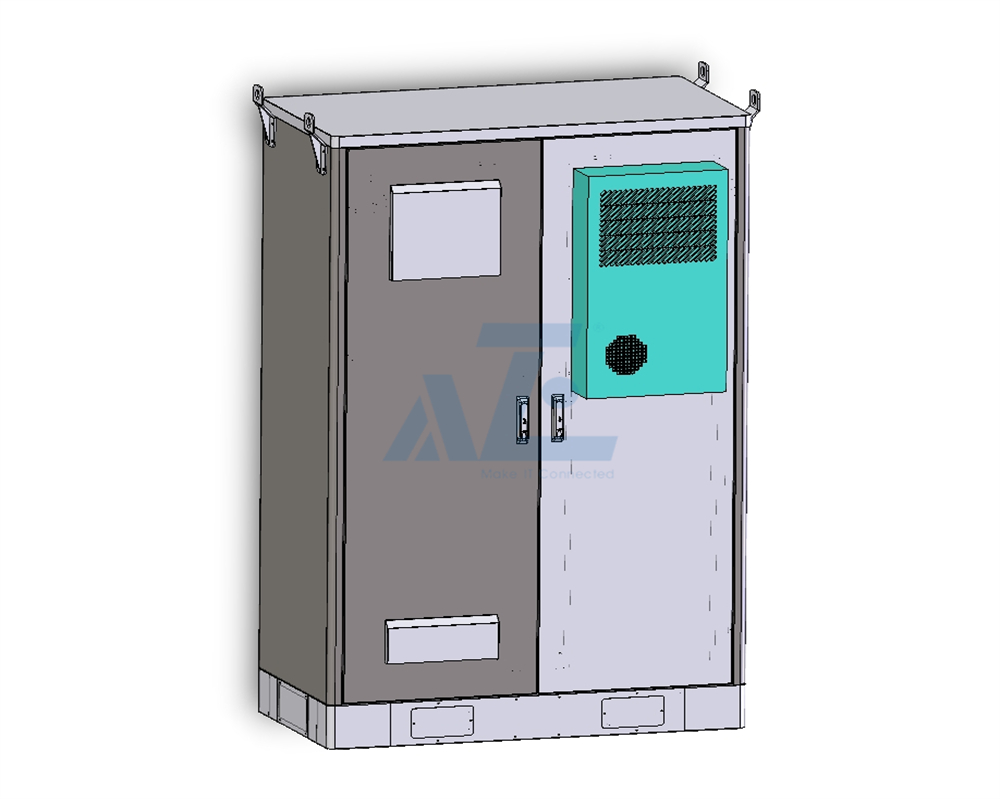
Commercial & Industrial All-in-one Hybrid ESS Outdoor Battery Cabinet
All-in-one ESS Solution
RODF421275DC1K5W-B10
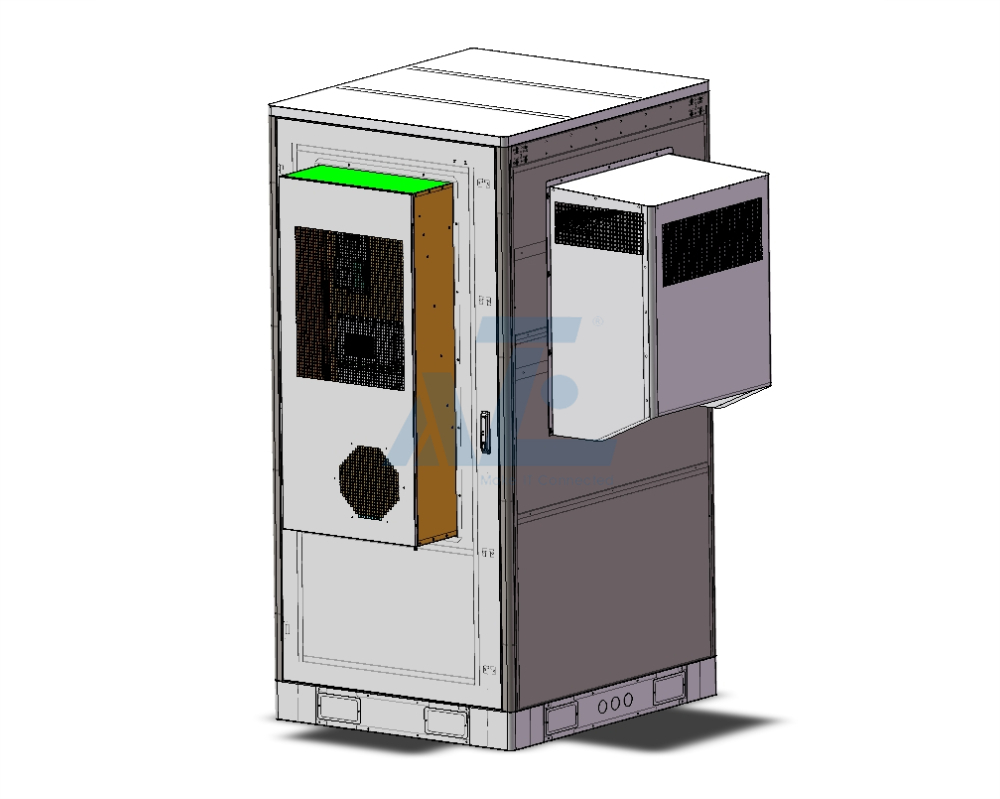
Hybrid C&I ESS Cabinet Commercial Energy Storage Solution
All-in-one ESS Solution
RODF221210AC3KW-B20
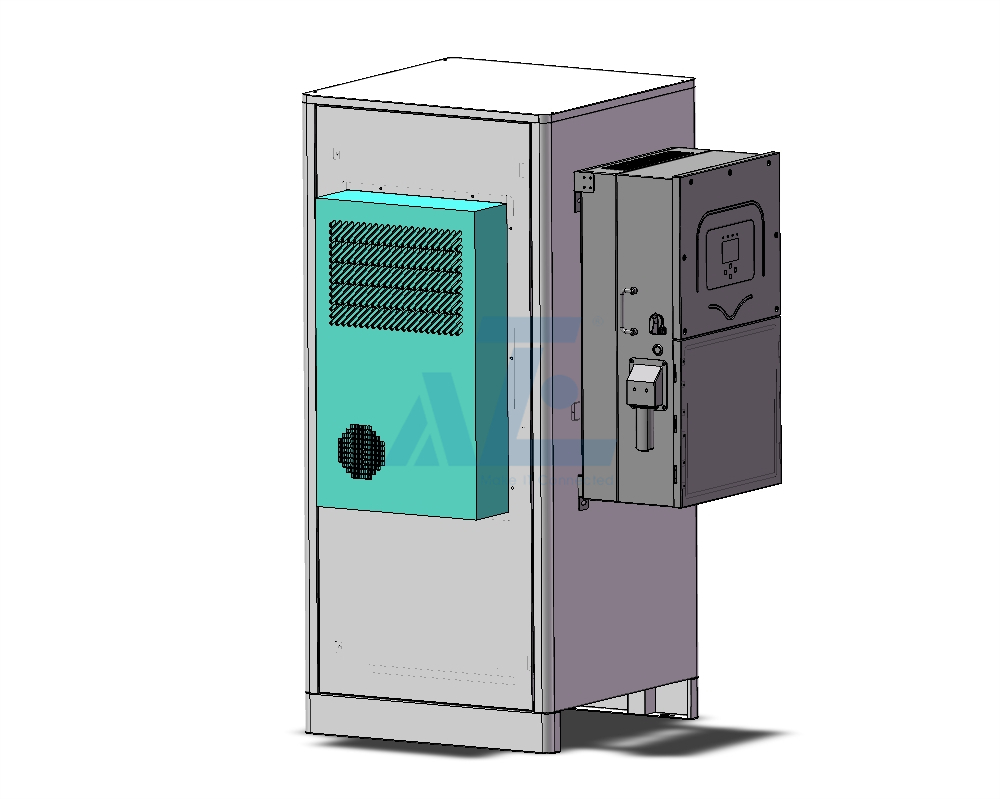
Solar Energy Lithium Battery and Inverter Storage Cabinet Solution
All-in-one ESS Solution
RODF307575DC1KW-B6
AZE's Battery Energy Storage Systems (BESS): Powering the Future of Energy Management
AZE is at the forefront of innovative energy storage solutions, offering advanced Battery Energy Storage Systems (BESS) designed to meet the growing demands of renewable energy integration, grid stability, and energy efficiency. Whether for utility-scale projects, industrial applications, or residential use, AZE’s BESS provides reliable, scalable, and sustainable energy storage to support a cleaner and more resilient energy future.
Key Features of AZE's BESS Energy Storage Systems:
-
Grid-Scale Energy Storage
AZE’s BESS is ideal for utility-scale battery storage, enabling grid stability, frequency regulation, and demand response to balance supply and demand efficiently. -
Renewable Energy Integration
Our systems seamlessly integrate with solar energy storage and wind energy storage, maximizing the use of renewable resources and reducing reliance on fossil fuels. -
Lithium-Ion Battery Technology
AZE utilizes cutting-edge lithium-ion battery storage technology, ensuring high energy density, long lifespan, and reliable performance for diverse applications. -
Energy Management System (EMS)
Equipped with an advanced energy management system, AZE’s BESS optimizes energy usage, enabling peak shaving, load shifting, and cost savings. -
Microgrid and Off-Grid Solutions
AZE’s BESS supports microgrid energy storage and off-grid systems, providing energy independence and resilience for remote or decentralized locations. -
Industrial and Commercial Applications
From energy storage for industrial applications to commercial use, AZE’s systems ensure uninterrupted power supply, backup power, and energy efficiency. -
Residential Energy Storage
AZE offers energy storage for residential use, empowering homeowners to store excess solar energy, reduce electricity costs, and ensure backup power during outages. -
EV Charging Support
Our BESS solutions are compatible with EV charging stations, enabling efficient energy management and supporting the growing demand for electric vehicles. -
Smart Grid Integration
AZE’s BESS enhances smart grid capabilities, facilitating decentralized power distribution and improving overall grid reliability. -
Sustainability and Carbon Reduction
By enabling renewable energy integration and reducing reliance on fossil fuels, AZE’s BESS contributes to sustainability and carbon reduction goals.
Industrial Battery Energy Storage Systems (BESS): AZE Telecom's Innovative BESS Cabinets for Efficient Energy Management
A BESS (Battery Energy Storage System) All-in-One Cabinet is an integrated solution designed to house and manage all components required for energy storage in a compact, modular enclosure. These cabinets are commonly used in residential, commercial, industrial, and utility-scale energy storage applications, offering reliability, ease of installation, and efficient operation.
Welcome to our Energy Storage Systems category, where innovation meets efficiency. As the demand for renewable energy grows, so does the need for reliable and advanced energy storage solutions. Our comprehensive range of energy storage systems is designed to meet the diverse needs of residential, commercial, and industrial applications. Explore our selection and discover how you can harness the full potential of your solar power system.
Powering the Future with Cutting-Edge Energy Storage Solutions
AZE's Energy Storage Solutions can be applied to a wide range of power generation, transmission and distribution, and consumption systems. It can enhance the reliability and stability of the grid at the power generation end, regulate power between generator, renewable energy, and loads, thus relieve the pressure on the grid caused by imbalances in supply and demand and unexpected events.
It is even more versatile for commercial and industrial users, with energy storage system in place, buildings and factories can optimize energy efficiency through peak-shaving, load shifting, PV self-consumption, demand response, and backup power in case of emergencies.
Features
- High-efficiency power conditioning capabilities for demand management, power dispatching, renewable energy smoothing, and more
- Integrates bi-directional power conditioning systems, battery system, site controllers, and an energy management system
- A full range of power conditioning system product lines, covering capacities from 100kW to 3.7MW, which can integrate different types of batteries for various energy storage applications
Energy Storage Systems (ESS) vs All-in-One (AIO) - Differences and Similarities
Energy Storage Systems or all in One Systems, What are they? What are the differences? By the most basic definition, they store energy for later use. While a simple concept, the execution can lean toward the complex.
AZE's All-in-One Energy Storage Cabinet is a cutting-edge, pre-assembled, and plug-and-play solution designed to simplify energy storage deployment while maximizing efficiency and reliability. This integrated BESS combines advanced lithium-ion battery technology, a Power Conversion System (PCS), and an Energy Management System (EMS) into a single, compact energy storage system. Its modular design ensures scalability, making it suitable for a wide range of applications, from grid-tied storage to off-grid solutions and microgrid integration.
Key features of AZE's All-in-One Energy Storage Cabinet include:
-
Thermal Management System: Equipped with an advanced cooling system and heat dissipation mechanisms to maintain optimal operating temperatures, ensuring safety and longevity.
-
Battery Management System (BMS): Provides real-time monitoring and control of battery modules, ensuring optimal performance, state of charge (SOC), and state of health (SOH).
-
Fire Suppression System: Built-in safety mechanisms to prevent and mitigate fire risks, complying with stringent safety standards and UL certification.
-
Remote Monitoring: Enables smart energy storage management through real-time data access and control, enhancing operational efficiency.
-
Environmental Protection: Designed with IP-rated enclosures to withstand harsh conditions, ensuring corrosion resistance and shock and vibration resistance.
-
Compact and Scalable: The pre-configured system allows for rapid deployment and easy expansion, making it ideal for utility-scale storage, behind-the-meter applications, and hybrid energy storage systems.
AZE's All-in-One Energy Storage Cabinet is perfect for load shifting, peak shaving, backup power, and renewable energy integration, offering a high energy density and power density solution for modern energy needs.
Benefits of All-in-One BESS Cabinets
-
Compact Design
- Combines all essential components into a single enclosure, saving space and simplifying installation.
-
Ease of Installation
- Plug-and-play design reduces setup time and labor costs.
- Modular systems allow scalability for different energy needs.
-
Robust Construction
- Outdoor-rated enclosures (e.g., NEMA 3R, IP65) protect against weather and environmental hazards.
-
Flexibility
- Compatible with renewable energy sources, grid-tied systems, or off-grid applications.
- Supports various configurations (single-phase or three-phase).
-
Efficiency and Reliability
- Integrated systems minimize energy loss and optimize performance.
- Understanding Energy Storage Systems
Energy storage systems (ESS) store energy for later use. They often use batteries but can also include other technologies like thermal storage or flywheels.
- Main Components:
- Battery: The primary component which stores the energy.
- Battery Management System (BMS): Ensures safe operation of the battery, managing charging and discharging.
- Inverter/Charger: Converts stored DC energy to AC for use and manages the charging of the battery.
- Purpose:
- Store excess energy generated by renewable sources (like solar panels) for use when production is low or demand is high.
- Provide backup power during grid outages.
- Support grid stability by providing ancillary services.
- Advantages:
- Flexibility in system design (can be paired with various types of inverters).
- Scalability (can add more storage as needed).
- Optimized for energy storage and management.
- Understanding All-in-One Inverter Systems
All-in-one inverter systems combine multiple components such as a solar inverter, battery inverter, and energy storage into a single unit.
- Components
- Inverter: Converts DC power from solar panels or batteries to AC power for home use.
- Charge Controller: Manages the charging of the battery.
- Battery Storage: Integrated storage for energy.
- Purpose:
- Simplifies installation and system integration by combining multiple components into one unit.
- Provides a streamlined solution for both energy conversion and storage.
- Advantages:
- Simplified installation and reduced space requirements.
- Easier system management and monitoring.
- Often comes with integrated software for better performance
Key Differences
Flexibility:
- ESS: More flexible, can be paired with various inverter types and sizes.
- All-in-One: Less flexible as components are integrated into a single unit.
Scalability:
- ESS: Easily scalable by adding more storage or larger components.
- All-in-One: Limited scalability, often restricted by the capacity of the integrated system.
Complexity:
- ESS: Typically requires more complex installation and integration.
- All-in-One: Easier to install and manage due to its integrated nature.
Cost:
- ESS: Can be more cost-effective for larger custom systems.
- All-in-One: May have a higher initial cost but can save on installation and integration costs.
Choosing Between ESS and All-in-One Systems
- ESS: Ideal for residential or commercial systems or where flexibility and scaleability are important or for larger scale systems.
- All-in-One: Suitable for residential or smaller commercial installations where simplicity and ease of use are key.
- Both systems have their unique benefits, and choosing between them depends on specific needs, project size, and installation requirements.
AZE's BESS Energy Storage Cabinets are engineered to deliver robust and flexible energy storage solutions for a variety of applications. These cabinets are designed with a focus on modularity, safety, and efficiency, making them ideal for both utility-scale storage and distributed energy resources (DERs). The cabinets house lithium-ion battery packs and are equipped with advanced systems to ensure reliable performance and long-term durability.
Key features of AZE's BESS Energy Storage Cabinets include:
-
High-Voltage and Low-Voltage Options: Available in configurations to meet diverse energy requirements, from front-of-the-meter to behind-the-meter applications.
-
Battery Management System (BMS): Ensures precise control over battery modules, optimizing cycle life, depth of discharge (DOD), and overall system performance.
-
Thermal Management: Incorporates cooling systems and ventilation to maintain stable operating conditions, preventing overheating and extending battery life.
-
Power Distribution Unit (PDU): Facilitates efficient energy distribution and integration with AC/DC conversion systems.
-
Safety and Compliance: Built to meet IEC standards and UL certification, with features like fire suppression systems and shock-resistant enclosures.
-
Scalability: The modular design allows for easy expansion, supporting energy arbitrage, frequency regulation, and voltage support.
-
Environmental Durability: Designed with IP-rated enclosures and corrosion-resistant materials, ensuring reliable operation in challenging environments.
AZE's BESS Energy Storage Cabinets are ideal for applications such as renewable energy integration, grid stability, demand response, and black start capability, providing a reliable and efficient energy storage solution.
Applications
- Renewable power plants
- Traditional power plants
- Power transmission and distribution systems
- Commercial buildings
- Factories
- EV charging stations
- Microgrid
Utility and Residential Solutions
AZE provides a solution to generate clean electricity for your own solar-powered home. When it comes to residential solutions featuring superior safety and easy installation, AZE is the ideal choice for homeowners to going solar. Enjoy your unparalleled experience of green energy, optimal solar energy usage, reduced electricity bills and much more.
AZE's ESS can control and dispatch power to the grid, relieving pressure on the power grid caused by imbalances in supply and demand and unexpected events, thus improving the reliability and stability of the power supply.
- Emergency backup power
- PV smoothing
- Frequency regulation
- Regulation reserve ancillary service
Commercial & Industrial Solutions
AZE provides commercial and industrial energy solutions for EPCs, developers, and owner-operators to utilize the roof resources. AZE's ESS can assist commercial and industrial businesses in responding to regulations and supply chain trends. It can also support grid applications, reduce electricity costs, leverage renewable power, and be applied in other versatile applications to optimize energy management.
- Peak shaving and load shifting
- Demand response
- PV self-consumption
- Backup power
A BESS works like a large-scale rechargeable battery, storing electricity when it’s abundant, often from renewable sources like the sun and wind. In addition to supplying energy for your business when demand is high, a BESS acts as a reliable backup during outages or disruptions. This system provides financial benefits by optimizing energy costs and promotes a greener grid by reducing reliance on non-renewable sources.
Power up while reducing costs
A BESS can store energy when electricity prices are low, like at night or when a lot of renewable energy is generated. Then, during peak hours when prices rise, a BESS can be used to support charging instead of drawing power from more costly sources – potentially reducing your energy bills.
Minimize interruptions
With a BESS, you get a steady and reliable source of backup power. So even if the sun isn’t shining, the wind isn’t blowing, or an unexpected power outage occurs, a BESS can help ensure your operations maintain a consistent flow.
Earn from excess energy
As well as storing energy, a BESS provides the opportunity to participate in the energy market. During peak hours, surplus energy can be sold back to the grid instead of remaining unused. This transforms excess energy into extra revenue while supporting a greener grid.
What's inside BESS?
A BESS is built on various components that work together to efficiently store, manage, and release electrical energy. Each component has a specific role, contributing to the overall performance and functionality of a BESS.
- Batteries
Stores incoming electricity from various sources, such as renewables, and releases it when needed.
- Inverter
The inverter takes the stored electricity (DC) from the batteries and converts it into the type of electricity (AC) we normally use in homes or buildings.
- Battery management system
Monitors and controls the batteries, ensuring they charge and discharge safely and efficiently. It also manages the temperature and overall health of the battery cells.
- Energy management system
Handle the charging and discharging of the batteries and regulate the flow of electricity to and from the grid.
-
Thermal management system
Aims to ensure that the BESS operates optimally no matter the surroundings. It includes pumps, radiators, an active cooling unit, and a heater.
BESS are very flexible and can support and solve many challenges regarding electrification, such as storing intermittent renewable energy or reducing power peaks in constrained grids. For example, BESS might primarily support electric vehicle charging in a weak grid. But it can also provide additional services like grid support, leading to revenue opportunities, or CO2 optimization of your local energy use.
Flexible, Scalable Design For Efficient Energy Storage.
Energy storage is critical to decarbonizing the power system and reducing greenhouse gas emissions. It's also essential to build resilient, reliable, and affordable electricity grids that can handle the variable nature of renewable energy sources like wind and solar. There are different energy storage solutions available today, but lithium-ion batteries are currently the technology of choice due to their cost-effectiveness and high efficiency.
Applications
- Residential: Backup power, peak shaving, solar energy storage.
- Commercial and Industrial: Demand charge reduction, renewable integration, grid services.
- Utility-Scale: Grid stabilization, renewable energy smoothing, frequency regulation.
Considerations When Choosing a BESS All-in-One Cabinet
- Capacity and Scalability: Ensure the system can handle current and future energy needs.
- Safety Standards: Check for compliance with IEC, UL, and local safety regulations.
- Thermal Management: Ensure efficient cooling/heating for optimal performance.
- Monitoring Features: Look for robust remote monitoring and diagnostics capabilities.
- Cost and Warranty: Evaluate the total cost of ownership, including installation, maintenance, and warranty coverage.
This type of cabinet is ideal for simplifying energy storage deployments while providing high reliability and performance in diverse applications.
Building a BESS (Battery Energy Storage System) All-in-One Cabinet involves a multi-step process that requires technical expertise in electrical systems, battery management, thermal management, and safety protocols. This process integrates key components like batteries, inverters, and control systems into a single enclosure that is safe, efficient, and durable. Below is a general overview of the steps to design and build a BESS All-in-One Cabinet.
Steps to Build a BESS All-in-One Cabinet
1. Planning and Design
-
Identify Requirements:
-
Determine the power capacity (kW) and energy storage capacity (kWh) required for the system.
-
Decide on the use case (residential, commercial, or utility-scale) to ensure the system meets the specific needs.
-
-
Component Selection:
-
Choose the battery technology (lithium-ion, LiFePO4, etc.).
-
Select the appropriate inverter and converter.
-
Identify other components such as the energy management system (EMS), battery management system (BMS), cooling systems, and safety features.
-
-
Compliance and Standards:
-
Ensure that the cabinet design complies with safety standards (e.g., UL, IEC, NEMA) and local regulations.
-
-
Size and Layout:
-
Design the enclosure size, considering all components and future scalability.
-
Plan the internal arrangement for efficient airflow, wiring, and ease of maintenance.
-
2. Design the Enclosure
-
Materials:
-
Choose materials based on durability and environmental protection (e.g., stainless steel or powder-coated aluminum for weather resistance).
-
-
IP Rating:
-
Ensure the enclosure meets the required Ingress Protection (IP) rating, such as IP65 or IP66, to protect against water and dust ingress.
-
-
Structural Design:
-
Incorporate features for securing all components, providing ventilation, and allowing easy access for maintenance and repair.
-
-
Thermal Management:
-
Design the enclosure to support active or passive cooling systems, such as fans, heat exchangers, or air conditioning units to regulate temperature.
-
-
Cable Management:
-
Plan cable routing for efficient organization and safety, ensuring easy access for connections.
-
3. Install the Battery Modules
-
Battery Storage:
-
Install lithium-ion or other battery types in battery racks designed to hold and protect them.
-
-
BMS Integration:
-
The Battery Management System (BMS) should be integrated to monitor individual cell voltages, temperature, and state of charge (SOC) to ensure safe operation.
-
-
Battery Connections:
-
Properly wire the battery modules in series or parallel to achieve the desired voltage and capacity.
-
-
Safety Considerations:
-
Incorporate temperature sensors, fuses, and circuit breakers to ensure safe operation.
-
4. Integrate the Inverter/Converter
-
Inverter Selection:
-
Select a bi-directional inverter that can both charge the battery from the grid/renewables and discharge the stored energy as AC power.
-
-
Install the Inverter:
-
Mount the inverter in a dedicated space within the enclosure. Ensure proper ventilation and cooling to avoid overheating.
-
-
Grid Integration:
-
If grid-tied, connect the inverter to a power distribution unit (PDU) for seamless connection to the grid or external load.
-
5. Energy Management System (EMS) Integration
-
Control Unit:
-
The EMS should manage the charging and discharging cycles, prioritize energy sources, and optimize battery usage based on load and grid conditions.
-
-
Connectivity:
-
Implement IoT or communication protocols (e.g., Modbus, CANbus, or Wi-Fi) to enable remote monitoring and management of the system.
-
6. Safety Features
-
Fire Suppression:
-
Incorporate a fire suppression system (e.g., automatic CO2 or FM-200) to prevent or mitigate fires.
-
-
Surge Protection:
-
Include surge protectors to protect the system from voltage spikes.
-
-
Grounding and Earthing:
-
Properly ground the entire system to avoid electrical hazards.
-
-
Locks and Alarms:
-
Install tamper-proof locks, motion sensors, or alarms for security.
-
7. Thermal Management System
-
Cooling Systems:
-
If active cooling (e.g., fans or air conditioning) is used, install the necessary equipment to maintain the optimal operating temperature for the batteries and electronics.
-
-
Heat Exchangers or Ventilation:
-
Use passive ventilation (e.g., vents or louvers) to maintain airflow and dissipate heat.
-
8. Assembly and Wiring
-
Wiring:
-
Wire all components correctly, including the batteries, inverters, BMS, and EMS, ensuring secure connections and compliance with electrical codes.
-
-
Testing:
-
Test all components individually and the complete system for correct operation. Verify that all safety features (e.g., BMS, inverter protection) function as expected.
-
9. Deployment and Testing
-
System Integration:
-
Integrate the BESS cabinet with the site’s electrical grid or renewable energy sources, ensuring proper connectivity.
-
-
Commissioning:
-
Test the full system in various scenarios, such as charging and discharging cycles, grid connection, and backup operation.
-
-
Remote Monitoring Setup:
-
Set up remote monitoring tools to track battery status, energy storage performance, and health metrics.
-
10. Maintenance and Monitoring
-
Ongoing Monitoring:
-
Continuously monitor the system for any faults, battery performance, and temperature control issues.
-
-
Maintenance:
-
Schedule periodic maintenance checks to replace aging batteries, clean cooling systems, and ensure all components remain operational.
-
Considerations:
- Safety: Ensure compliance with safety standards such as UL 9540 (for energy storage systems) and local codes for electrical safety.
- Scalability: Design with future expansion in mind, such as additional batteries or inverters.
- Cost Efficiency: Evaluate system design for cost-effective components without compromising performance or safety.
Components You'll Need
- Batteries (Lithium-ion or LiFePO4)
- Inverter/Charger
- Battery Management System (BMS)
- Energy Management System (EMS)
- Cooling Equipment (fans, heat exchangers, or air conditioning)
- Protection devices (fuses, circuit breakers, surge protectors)
- Structural materials (steel, aluminum, insulation)
- Monitoring systems (IoT sensors, connectivity interfaces)
Challenges:
- Complex Integration: Integrating multiple systems (BMS, EMS, inverter) can be technically challenging.
- Safety and Compliance: Ensuring safety for both users and the environment is critical, particularly with high-energy systems.
- Cost and Time: Building a custom BESS system can be expensive and time-consuming, but off-the-shelf all-in-one systems can save time and cost.
Building a BESS all-in-one cabinet requires specialized knowledge in electrical engineering, energy storage, and safety protocols. If you lack the technical expertise, it’s often more efficient to work with established manufacturers or integrators who can deliver a reliable, compliant, and cost-effective solution.
Applications of AZE's BESS Energy Storage Systems:
-
Utility-Scale Projects: Supporting grid-scale energy storage for stable and efficient power distribution.
-
Renewable Energy: Integrating solar energy storage and wind energy storage for cleaner energy solutions.
-
Industrial and Commercial: Providing backup power, peak shaving, and load shifting for businesses.
-
Residential: Enabling energy storage for residential use to reduce costs and ensure reliability.
-
Microgrids: Powering off-grid systems and microgrid energy storage for remote or decentralized locations.
-
EV Charging: Supporting EV charging stations with efficient energy management.
-
Smart Grids: Enhancing smart grid infrastructure for improved energy distribution and reliability.
Why Choose AZE?
AZE’s Battery Energy Storage Systems (BESS) combine cutting-edge technology, scalability, and sustainability to deliver reliable energy storage solutions for a wide range of applications. Whether you’re looking to integrate renewable energy, enhance grid stability, or achieve energy independence, AZE provides innovative and customizable BESS solutions to meet your needs.
-
Innovative Design: Both the All-in-One Energy Storage Cabinet and BESS Energy Storage Cabinets feature compact, modular, and scalable designs tailored to meet diverse energy storage needs.
-
Safety and Reliability: With advanced thermal management, fire suppression systems, and BMS integration, AZE ensures the highest levels of safety and performance.
-
Sustainability: AZE's solutions support renewable energy integration and intermittency mitigation, contributing to a greener and more sustainable energy future.
-
Ease of Deployment: The plug-and-play design of the All-in-One Cabinet and the modularity of the BESS Cabinets enable rapid deployment and seamless integration into existing energy systems.
Whether you need a pre-configured, all-in-one solution or a customizable BESS cabinet, AZE delivers cutting-edge energy storage systems designed to meet the demands of modern energy applications.
Trust AZE to power your future with advanced energy storage systems that drive efficiency, sustainability, and resilience.
Battery Energy Storage Systems (BESS) | Reliable Grid-Scale & Renewable Energy Storage Solutions

